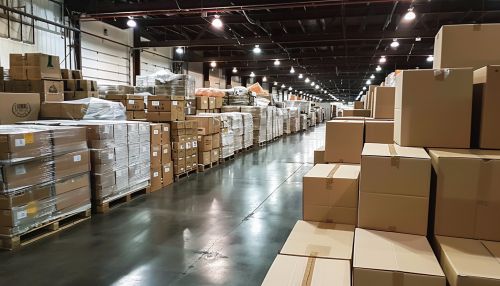Supply Chain
Overview
A supply chain is a system of organizations, people, activities, information, and resources involved in moving a product or service from supplier to customer. Supply chain activities involve the transformation of natural resources, raw materials, and components into a finished product that is delivered to the end customer. In sophisticated supply chain systems, used products may re-enter the supply chain at any point where residual value is recyclable.


History
The concept of a supply chain in management was of great importance long before, in the early 20th century, especially with the creation of the assembly line. The characteristics of this era of supply chain management include the need for large-scale changes, re-engineering, downsizing driven by cost reduction programs, and widespread attention to the Japanese practice of management.
Supply Chain Management
Supply chain management (SCM) is the broad range of activities required to plan, control and execute a product's flow, from acquiring raw materials and production through distribution to the final customer, in the most streamlined and cost-effective way possible.
Components of Supply Chain Management
Supply chain management is a crucial process for many companies, and many companies strive to have the most optimized supply chain because it usually translates to lower costs for the company. Quite often, many people confuse the term logistics with supply chain. In general, logistics refers to the distribution process within the company whereas the supply chain includes multiple companies such as suppliers, manufacturers, and the retailers.
Procurement
Procurement is the process of finding and agreeing to terms, and acquiring goods, services, or works from an external source, often via a tendering or competitive bidding process. The process is used to ensure the buyer receives goods, services, or works at the best possible price when aspects such as quality, quantity, time, and location are compared.
Production
Production involves the procedures that bring about the transformation of raw materials into finished goods. The raw materials are procured from the supplier and processed into finished goods and delivered to the customer.
Distribution
Distribution in supply chain management refers to the distribution of a good from one business to another. It can be factory to supplier, supplier to retailer, or retailer to end customer. It is defined as a chain of intermediaries, each passing the product down the line until it finally reaches the end consumer or the point of consumption.
Sales
The sales component involves the process of customer order processing and customer relationship management. The customer orders are processed and the goods are delivered to the customer as per the demand.
Supply Chain Optimization
Supply chain optimization is the application of processes and tools to ensure the optimal operation of a manufacturing and distribution supply chain. This includes the optimal placement of inventory within the supply chain, minimizing operating costs including manufacturing costs, transportation costs, and distribution costs.
Supply Chain Network
A supply chain network represents the chain of organizations that work together to design, produce, deliver, and service products or services to the market. The network structure includes the member's roles and responsibilities, as well as the trading relationships between the organizations.
Supply Chain Sustainability
Supply chain sustainability is a business issue affecting an organization’s supply chain or logistics network in terms of environmental, risk, and waste costs. There is a growing need for integrating environmentally sound choices into supply-chain management.
